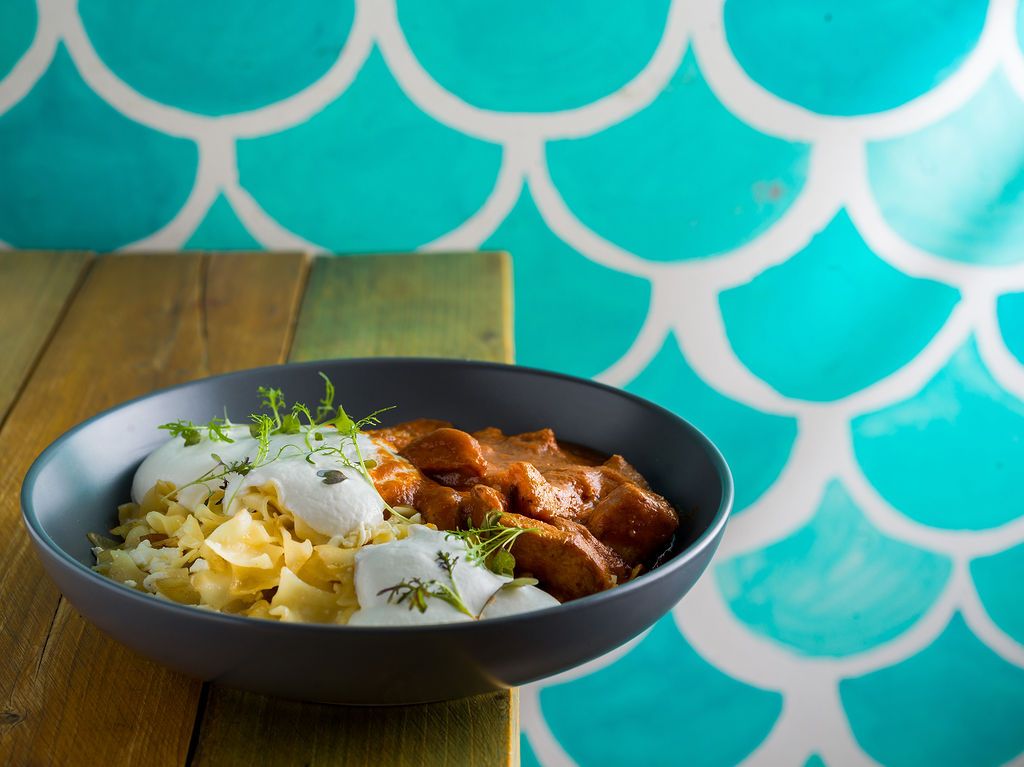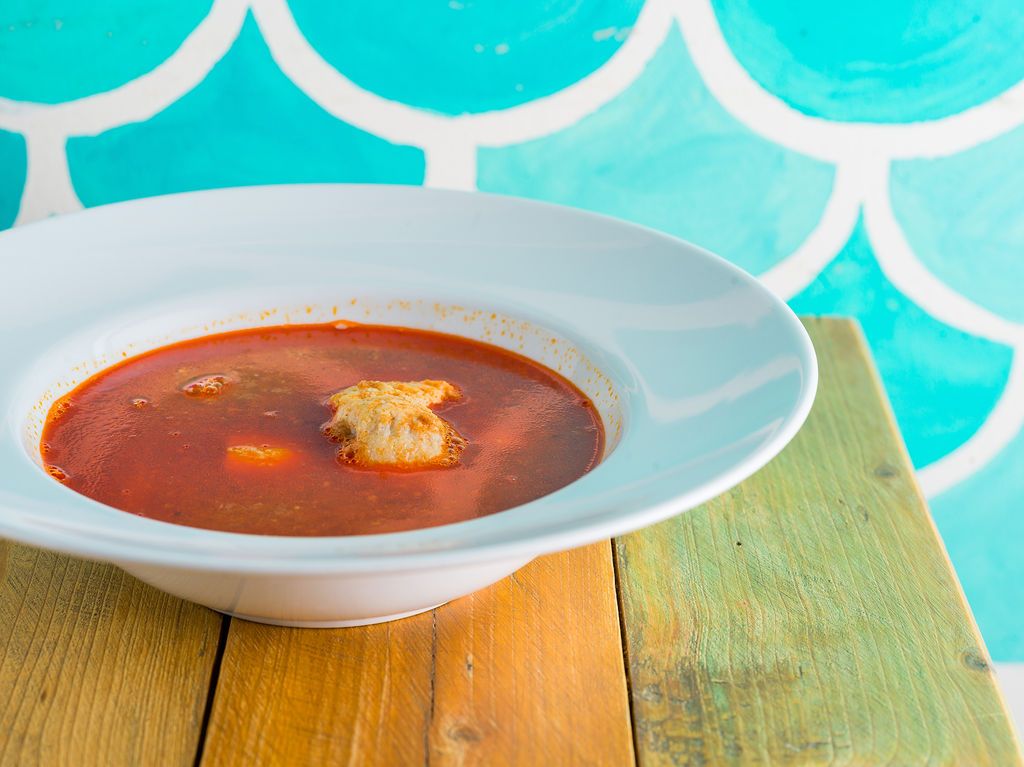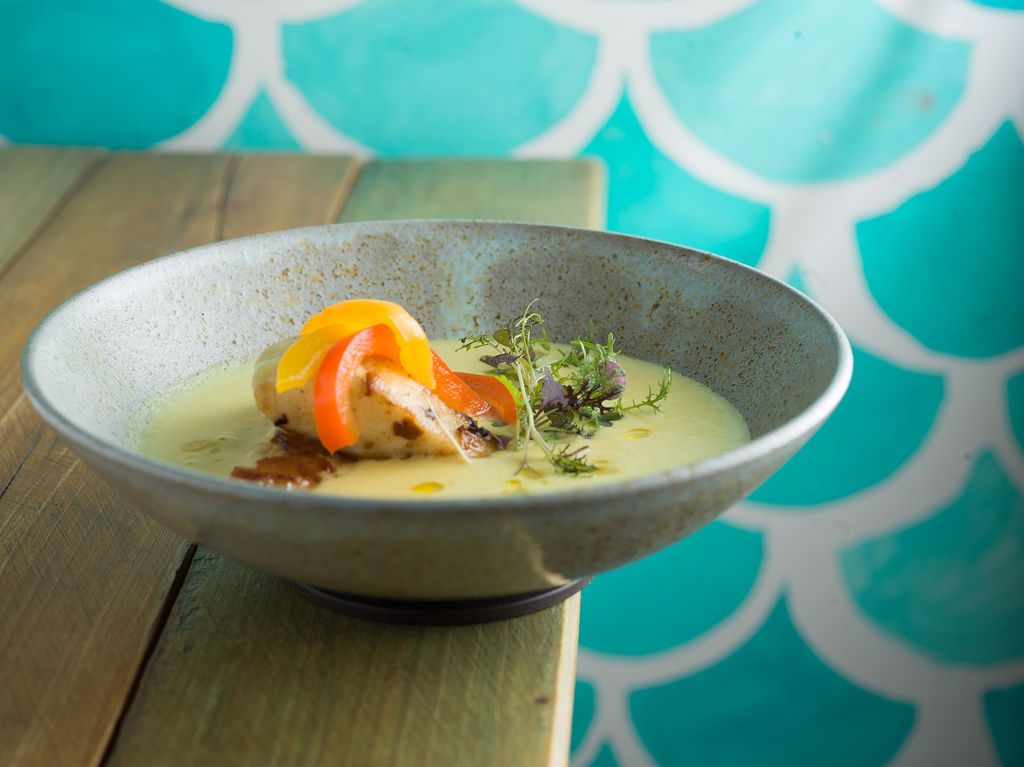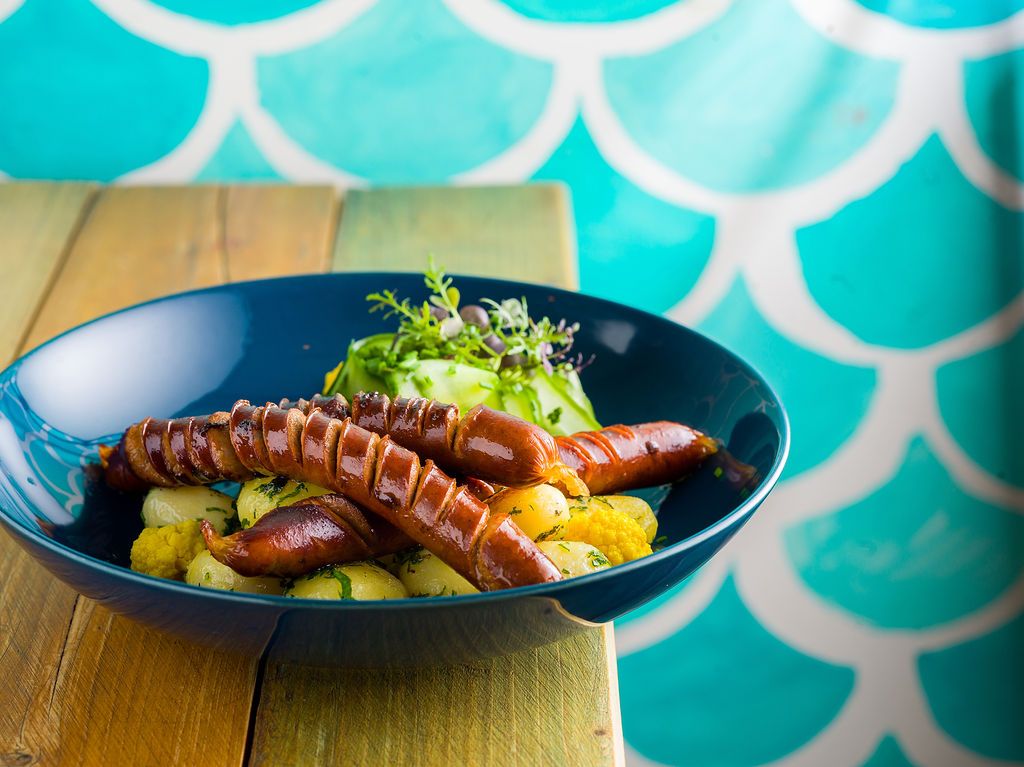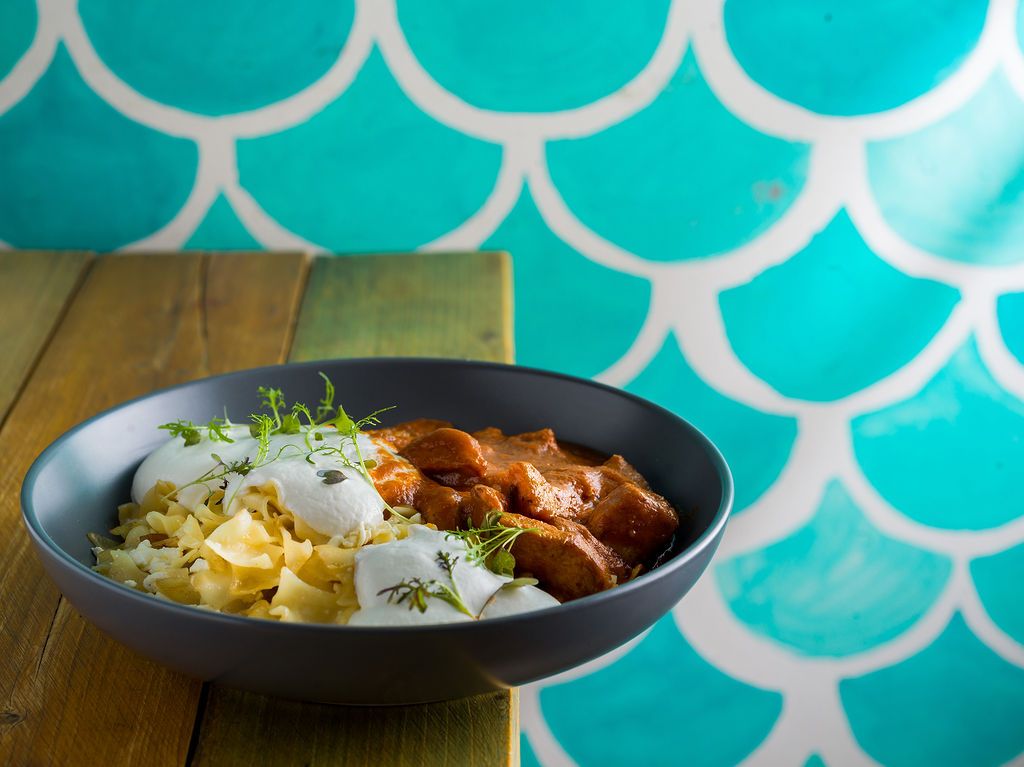Although gastronomy has changed a lot over the past decades, with new trends emerging almost weekly, the delicacies on the Christmas table somehow seem to remain constant. We look for flavors that we grew up on and the dishes we can enjoy together, regardless of generation. In this special edition of our Büfé series, we pay homage to these dishes with the help of some of the greats of Hungarian gastronomy.
Stuffed cabbage, fisherman’s soup, fried fish, goose legs, bejgli (Hungarian roll cake) or gingerbread—no matter how modern a household is, Christmas is never complete without them. The heritage goes back a long way: traditional peasant kitchens used to fast before the holiday, ending on 24 December. This was the time when people ate fasting bean soup, fish and pastry sweets (bejgli, poppy seed bread pudding). Fish is a Christian symbol that refers to Jesus, which is why it was put on the table in so many forms, even though the Hungarians consumed (and still consume) relatively few fish dishes. The next day came the cabbage, the pig roast (roasted sausages and chitterlings), the stuffed turkey and the aspic. The plates of the middle classes and nobility were more plentiful, with up to 6 or 7 courses, vegetable casseroles, Wellington steaks, game meats, fruity poultry, and a variety of cakes to finish the meal. Although what we prepare today has been tamed a lot, it is becoming more common, for example, to take a lighter approach to a dish (for example, to make stuffed cabbage with lentils instead of meat), in whatever alternative way, but we like to evoke the past.
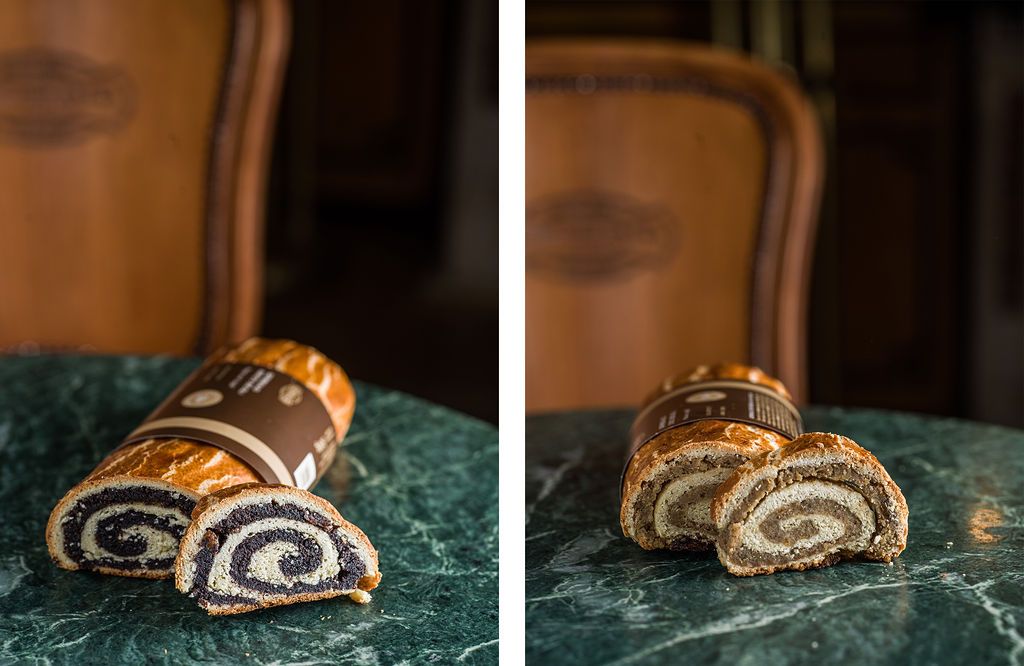
This is also shown by the answers our readers gave when we asked them on HYPE&HYPER’s Instagram page what their habits are. That’s why we’ve put together a selection of iconic Christmas dishes and asked a few restaurant owners and chefs to share their thoughts on the festive meal and give us one or more examples of what they think is unmissable at this time of year.
Zsuzsanna Lévai—Halkakas Halbisztró

A variety of fish dishes, with ingredients from Hungarian sources: the Halkakas shows everything that makes you love the genre. Zsuzsanna Lévai founded the restaurant nearly 10 years ago, back then in Veres Pálné Street—her father is a fish farmer, so there’s no question where the inspiration came from. For her, fish is not simply “fish”, as a lot depends on the species, which is worth showing off in the food. She is pleased to see that there is a growing interest in such dishes, especially when sustainability and health-promoting aspects are taken into account.
For her, the Christmas table is the place for both the classic fisherman’s soup with paprika and the coconut milk and ginger fish soup, but she also likes to show us what’s beyond the best-known recipes: why not try fresh, clean fish meat as crispy sausage or even as gyros, alongside the catfish paprikash? The restaurant prepares this kind of menu, regardless of the holiday, which can be tasted in Nagy Diófa Street, and soon, in Margit Boulevard, along with a very unusual concept, anyone can discover this world, whether they buy raw materials, semi-finished products or a fresh, spicy bistro dish.
Lajos Bíró—Bock Bisztró Balaton, Buja Disznó(k) Buda, Vendéglő a KisBíróhoz

Lajos Bíró’s name is unavoidable when we talk about Hungarian gastronomy. The gritty chef established his reputation as the owner and head chef of the Museum Café and Restaurant, but since the 2000s, he has opened a succession of restaurants, such as the Bock Bistro (Balaton), A Séf utcája, the Buja Disznó(k), and finally the Vendéglő a KisBíróhoz. He has always known how to present classic flavors, true Hungarian favorites, in a way that it boldly appeals to all ages, whether we talk about tourists or local guests. The renaissance of meat dishes is what’s happening in his restaurants, where it is guaranteed that no one will go hungry. Although he is still active and constantly working on new ideas, he has partly passed the baton to his son Dániel Bíró, who is currently running the youngest unit.
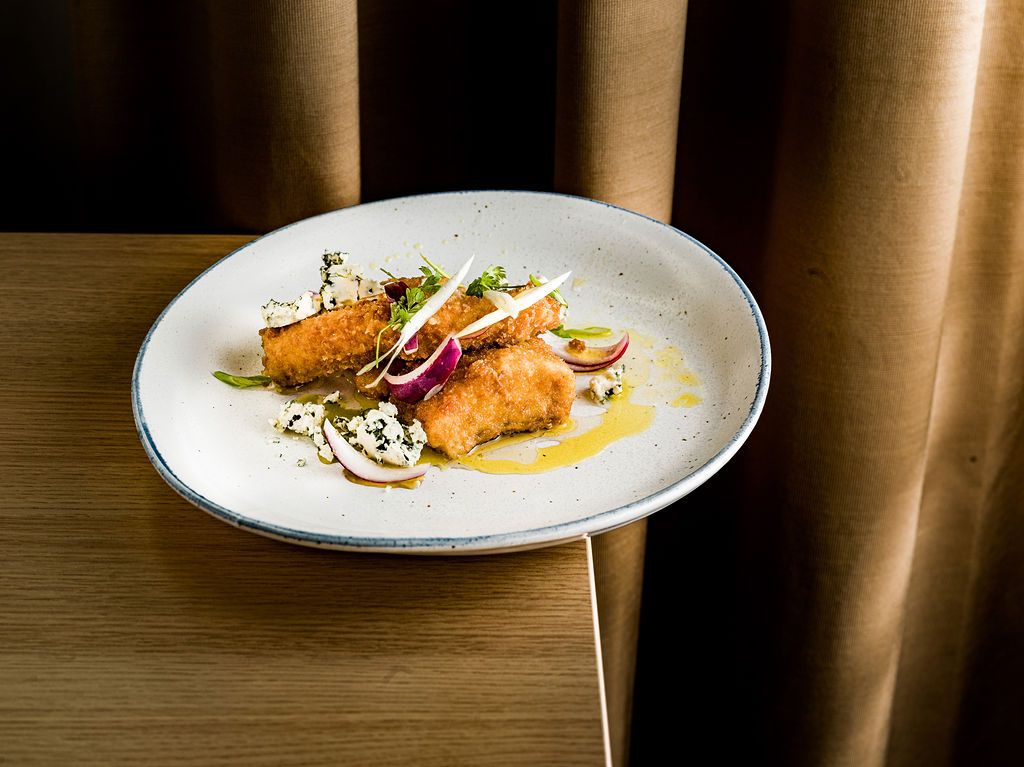
He believes that our gastronomic memory is fading, as very few restaurateurs and chefs know the original form of recipes and authentic cooking methods that could be passed on—not to mention how much Hungarian cuisine has changed in recent years decades. In his restaurants, he, therefore, prepares all the great favorites with care and using perfect ingredients. He knows that there are times when there’s still some breaded fish leftover that needs to be used somehow. That’s why the dish he prepares for us is fried toothfish in a rustic and smooth crumb, reborn in a purple onion and vinegar marinade and ideally served with blue cheese. (And after a few hundred portions of stuffed cabbage have been boiled in the restaurant, at home, they’ll prefer to dine on roast duck, sausage and classic peeled potatoes.)
Zoltán Kovács—Napfényes Étterem
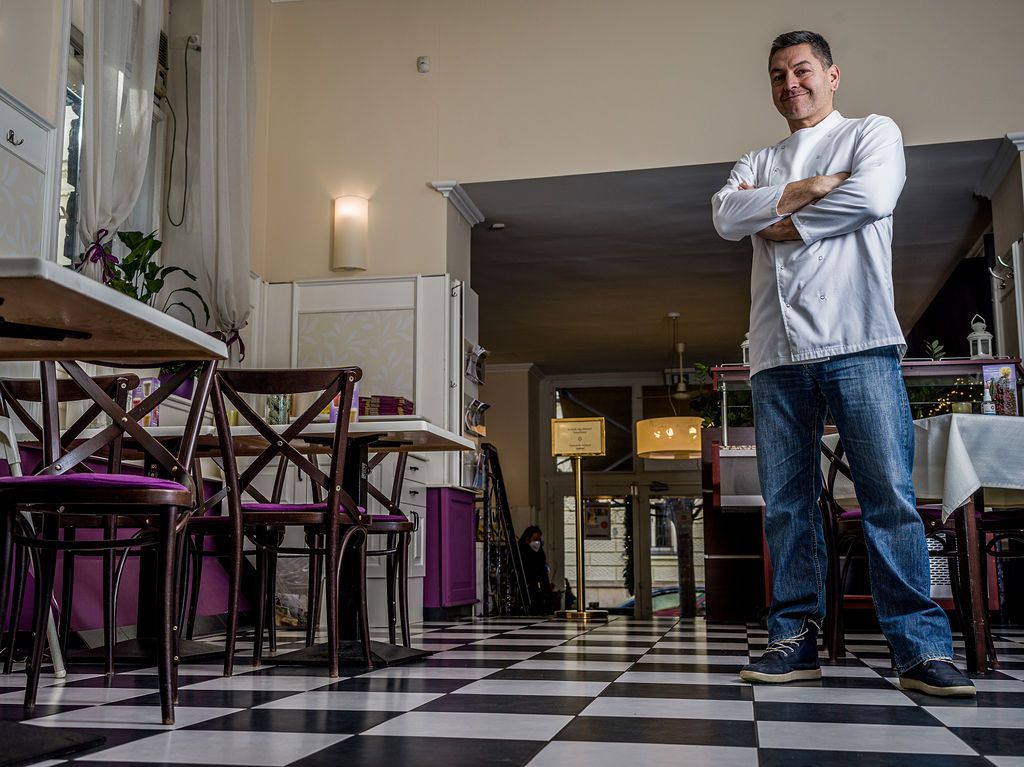
Comfort food, vegan versions, with enough creativity. The Napfényes Étterem is a longstanding representative of the restaurant’s presentation of plant-based nutrition, focusing on classic flavors. Their menu includes favorites such as stir-fried full plates, soy paprikash, bean goulash and even cottage cheese dumplings, free of any ingredients of animal origin. Chef Zoltán Kovács aims to create experiences that will prove to vegan and non-vegan diners alike how much potential there is in going meat, egg and dairy-free.
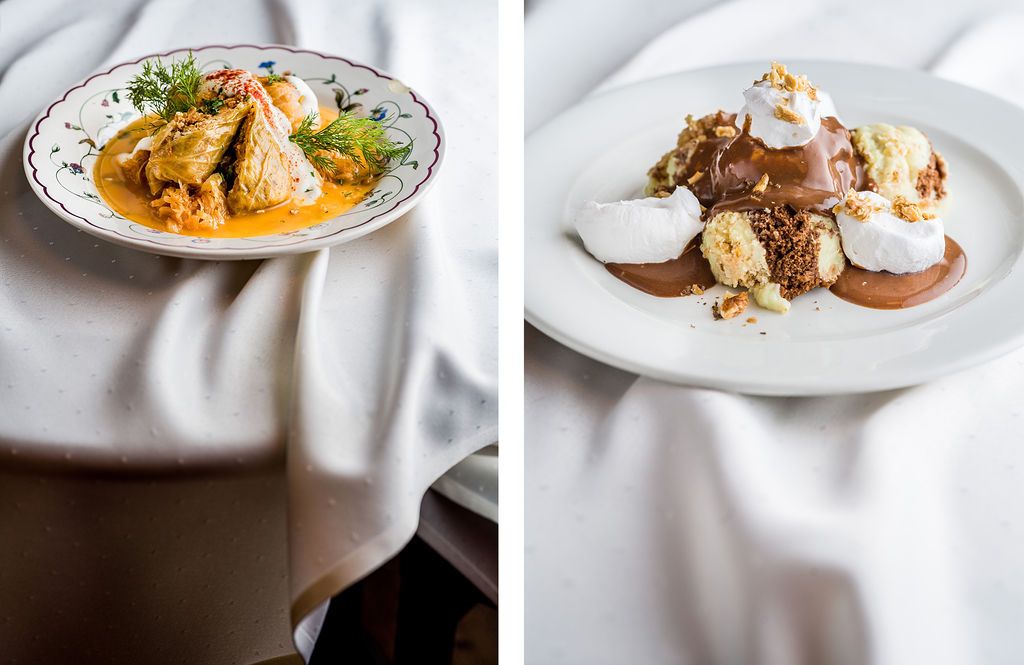
As the drive for a healthier lifestyle is becoming more and more pronounced, even flexitarian consumers are now happy to try such foods. Using lots of vegetables or going gluten-free is no longer the exception, but almost essential: stuffed cabbage, fisherman’s soup, French salad, somló dumplings, bejgli, linzer can all be prepared in a lighter version. In fish soup, for example, seaweed provides the flavors of lakes and rivers, Kyiv “chicken” is made as stuffed seitan, and in cakes, eggs can be substituted in countless ways, so everyone can enjoy Christmas without compromise.
Anna Niszkács—Gerbeaud Café
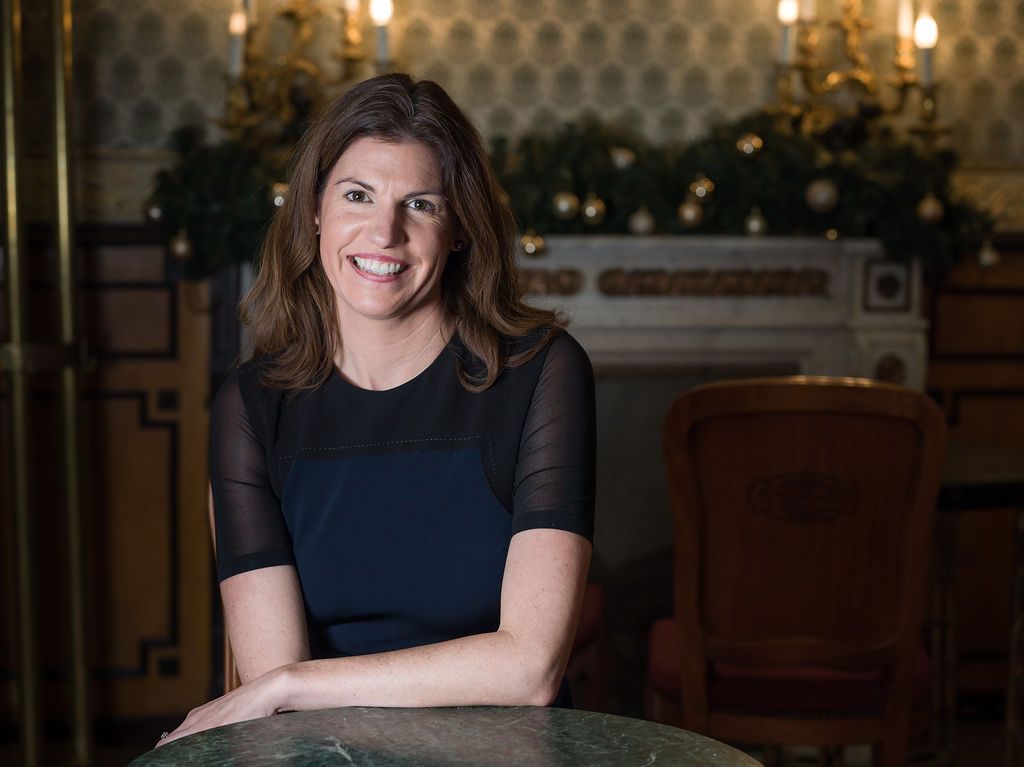
In Anna Niszkács’ life, tradition and innovation are in perfect harmony. The Gerbeaud Café, the Émile and Onyx Restaurant leader, strives to show that old values can still shine brightly today and that they can be used to build something entirely new. Gerbeaud is perhaps the most traditional of all, which is no coincidence since that’s what visitors are looking for, with the highest possible quality. Entering the impressive restaurant on Vörösmarty Square, you are immediately greeted by the counter, where you can taste the great favorites: Gerbeaud cake, Eszterházy cake, chestnut purée, Somló sponge cake, along with a few new ones.
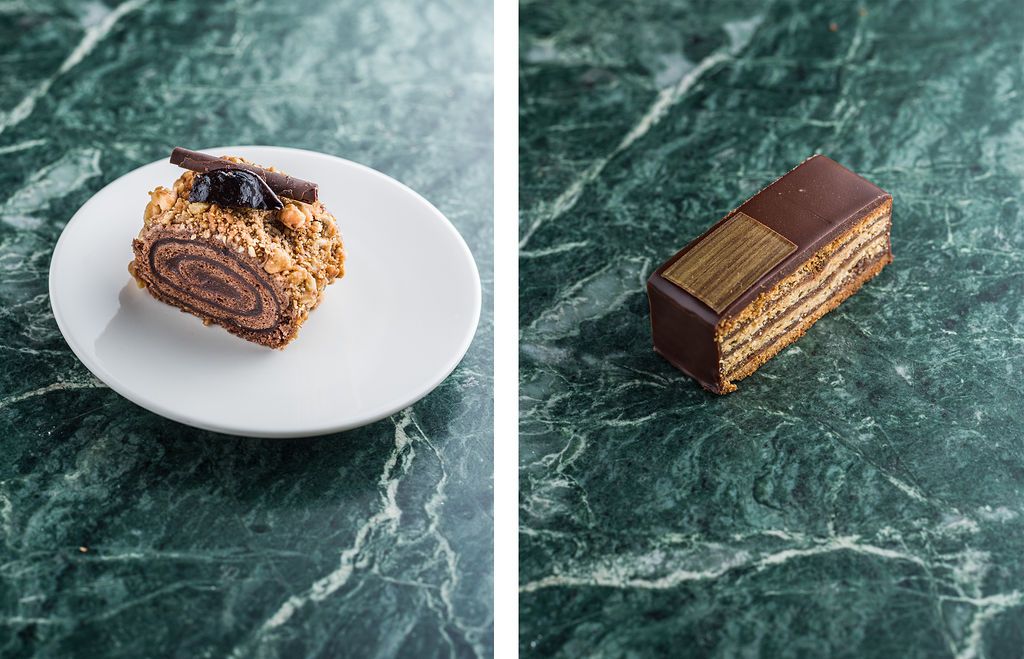
Of course, bejgli is also a huge favorite and is available every day of the year, with tens of thousands sold every year. For her, Christmas is three pastries: grandma’s Gerbeaud cake (which is supposed to be even better than the restaurant version), vanilla buns and chestnut purée with whipped cream, vanilla mousse and cherry, light yet rich. Because that’s what Christmas is all about: it’s not flashy, it’s not over the top, and all it takes to make you happy is powdered sugar that floats like snow and whipped cream that evokes a snowy landscape.
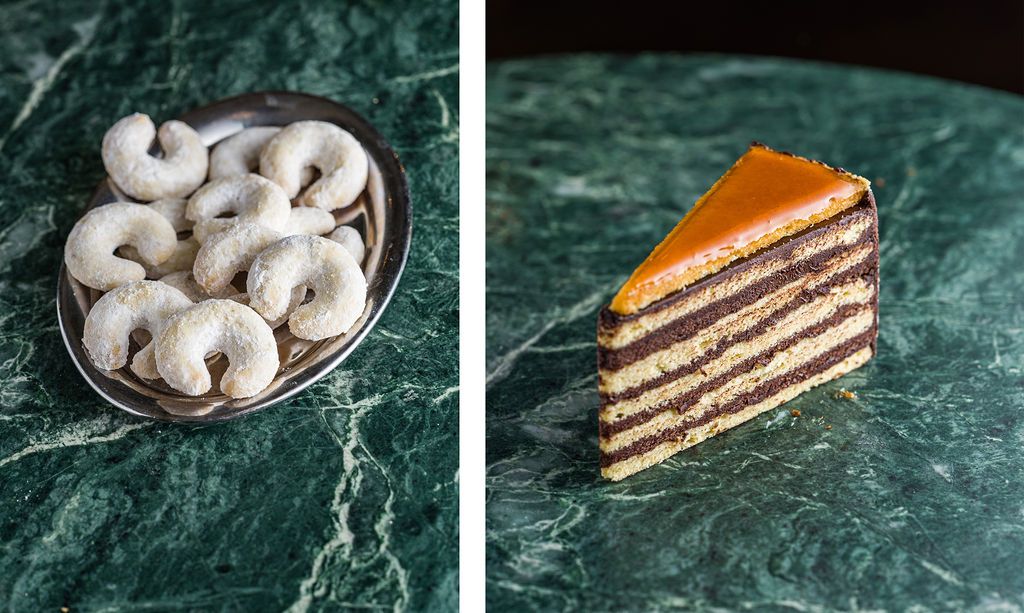

Four playlists—our background music for December
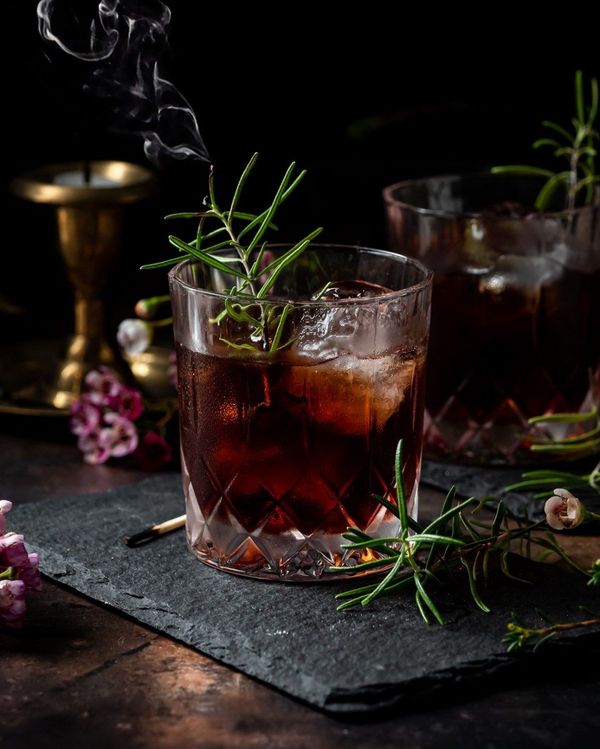
Warming Christmas drinks from Europe | TOP 5










